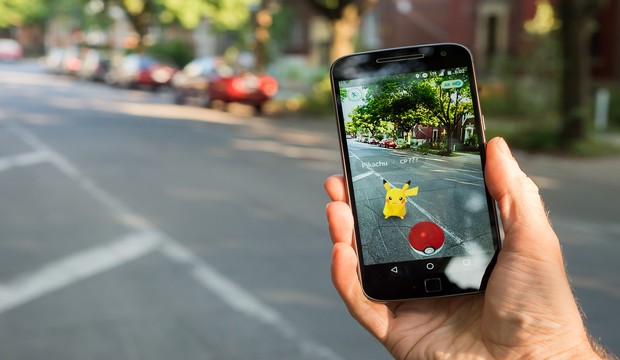Written by Christopher Harrison Skinner
Tourism is a great business. Sometime in the not too distant future destinations will embrace augmented reality as a means to attract and more important, retain visitors. The days of media-driven answers don’t always work for the DMO and individual businesses struggle to represent the whole market. We need more things that gives customers what they want.
Augmented reality Is one of those things that allows the user of an electronic device with a camera to visualize virtual objects in reality. A great and relevant example of this is the popular mobile game Pok?mon Go (pictured below).

Pok?mon Go, developed and published by Niantic, is a game for mobile phones released in the summer of 2016. The game’s main pull is that users can find and collect digital monsters scattered around the world using their phones. As you can tell from the picture above, a 3d digital creature is superimposed on the world as seen through the camera.
Augmented reality differs from virtual reality in one major way. In virtual reality, the user’s sense of space in the world is almost completely nullified; at the least, users of virtual reality wear a headset that completely obstructs their vision of the real world. The Oculus Rift (pictured below from the front and the back) is a prime example of what a basic virtual reality headset looks like.


As you can see, the headset completely envelopes the user’s eyes, cutting off their view of the real world. This is not going to be the answer to real-world tourism.
Inside the headset are a pair of small screens that are directly in front of the user’s eyes. The screens work like typical screens, displaying whatever the developer has made, the pair of small screens creating a false binocular vision. Some more advanced models also come with hand controls that are able to create a digital copy of the user’s hands that track and mirror the users hand movements from the real world to the virtual world accurately using infrared sensors; additionally, they can include headphones that allow the user to hear whatever is in the virtual world. Finally, some experimental devices allow for the player to “walk” in the virtual world using a multi-directional treadmill (pictured below).
All these combine to give the user the most realistic feeling of being in a virtual world apart from the real world. Unfortunately, all these devices mean that the user must be confined to a small area in the real world (as small as 2×2 meters to as large as 3×3 meters)
Augmented reality, on the other hand, primarily uses the real world and superimposes virtual assets (text, images, 3d and 2d, etc) onto the screen of whatever electronic device the camera is hooked up to. Compared to virtual reality, augmented reality is cheaper, more accessible, and allows the user to move about the real world freely. Most destinations have deep understandings of their history. That asset alone is more valuable than media when integrated with augmented reality.
My suggestion is to use augmented reality to introduce tourists to history mashed with current businesses and attractions through their phones at historic locations. Every place has a history that can be explored and brought forward to the current world. In New Orleans, there is a thirst for its history. The public wants history yet how it’s performed today is inconsistent and on the schedule of the business, not the customer.
In addition, a company can fill in the blanks and hire reenactors to portray any event at a historical location and film it with a 360-degree camera. Similar to how online education is coming about, this is a way to bring modern tourism and history together. Augmented reality developers could make an app that shows this reenacted scene to the user through their electronic device, allowing the user to experience a reenactment of history up close and in any position they want and at the same historic location. The image below is a good example of what I was thinking about; I took a modern-day image of New Orleans and a historical photo and made it appear that the viewer sees the historic photo through their phone.

This version of augmented reality could be repurposed for almost anything tourism related; haunted houses, historic battles, maps, the Hurricane Katrina flood, sports. Almost anything could be recreated with reenactors, computer-generated images, and historic buildings. Much of these assets exist already and can be made useful in a modern way.
When combined with current assets such as the businesses in these historic buildings, you drive a multitude of things at the same time. You satisfy the need for tax revenue while creating customer delight for the tourists in a consistent and modern way.


